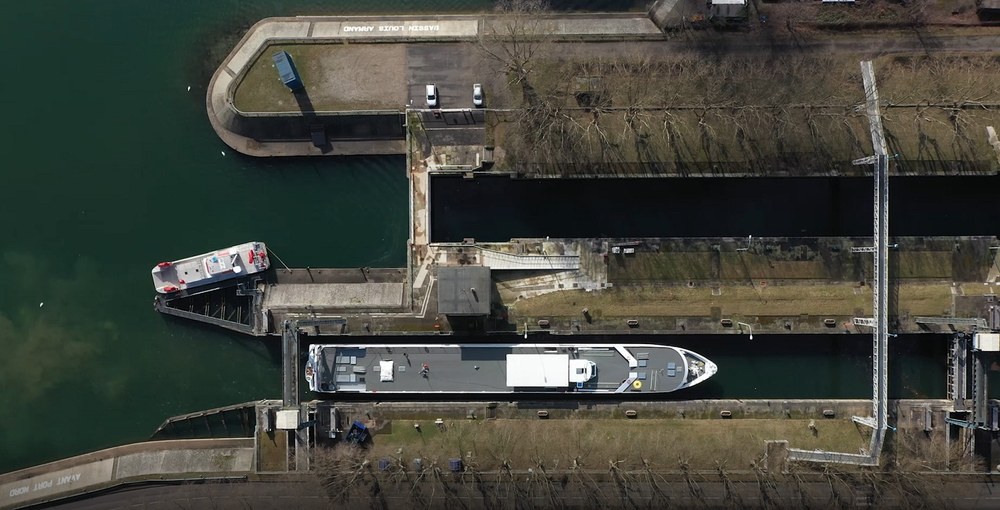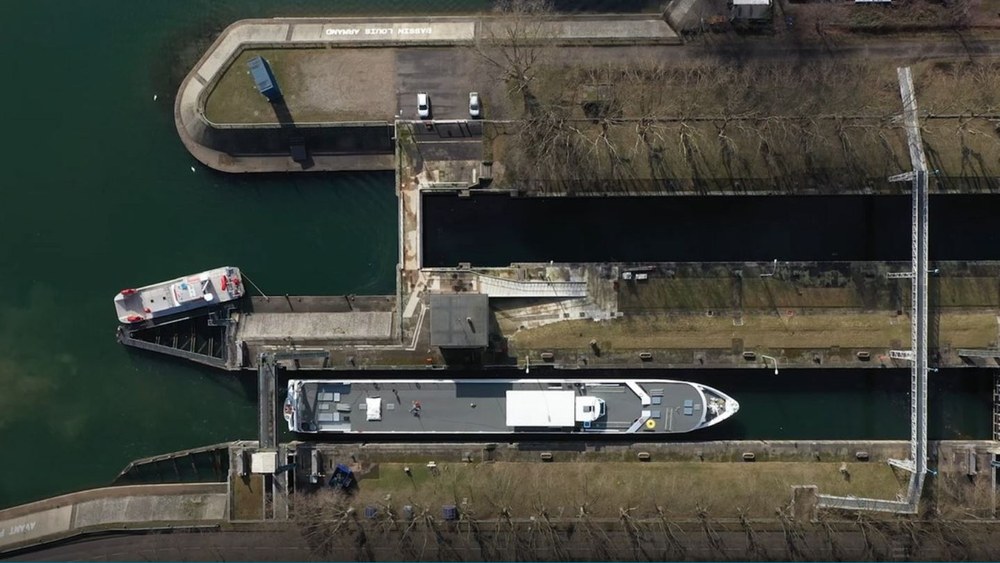Erste automatisierte Schleuseneinfahrt eines Binnenschiffs
Schleuseneinfahrten gehören zu den anspruchsvollsten Manövern in der Binnenschifffahrt. Zukünftig sollen Schiffe automatisiert in Schleusen einfahren, um die Sicherheit für Mensch, Schiff und Infrastruktur auch unter schwierigen Bedingungen zu gewährleisten. Wissenschaftlerinnen und Wissenschaftler des Deutschen Zentrums für Luft- und Raumfahrt (DLR) entwickelten eine Technologie zur hochgenauen satellitenbasierten Positionierung von Binnenschiffen. In einer Realdemonstration im Projekt SCIPPPER wurde damit zum ersten Mal eine automatisierte Schleuseneinfahrt erfolgreich durchgeführt.



